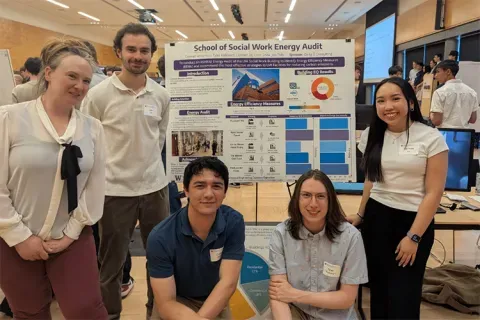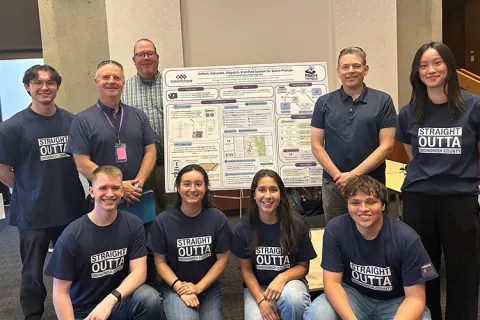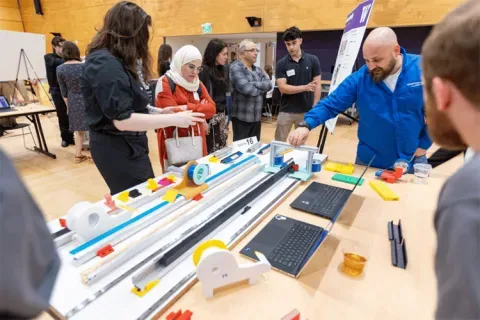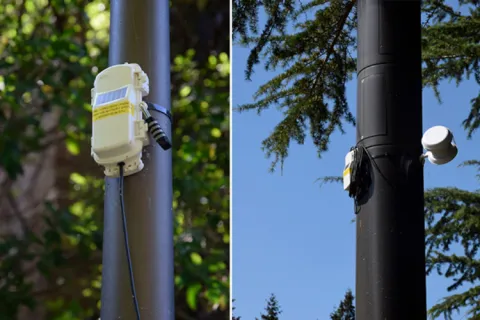Tulalip Tribes and Snohomish Public Utility District
Resiliency for the Tulalip Tribes Government Center – Community Considerations
COMMUNITY DESCRIPTION: The Tulalip (pronounced Tuh’-lay-lup) Tribes are direct descendants of and the successors in interest to the Snohomish, Snoqualmie, Skykomish, and other allied bands signatory to the 1855 Treaty of Point Elliott. The treaty reserved the Tulalip Indian Reservation as a permanent homeland over which the Tulalip Tribes have retained inherent sovereign jurisdiction. The Tulalip Reservation exterior boundaries enclose a land-base of 22,000 acres rich with natural resources: marine waters, tidelands, freshwater creeks and lakes, wetlands, forests and developable land. The Tribe’s status as a sovereign entity maintains their right to self-govern as a “nation within a nation” and includes the inherent right as a government to raise revenue for the community. The reservation is governed by a board of seven directors chosen by Tribal members for three-year terms of service - a modern version of the separate Tribal Councils that governed the Tribes and allied bands for thousands of years in the Puget Sound. PROJECT DESCRIPTION: The partnership between the Tulalip Tribes and Snohomish County PUD allows two perspectives on how adding clean energy generation and storage across the Tribal Campus can support: (a) Tribal Goals for resiliency, cost savings, and carbon reduction, while also (b) enhancing SnoPUD’s capability to meet its growing electrical loads, while operating a stable and secure system. This project takes a community perspective on the plans to add significant new clean energy infrastructure, assessing the reduction in energy costs to the community, added resiliency to outages, and the lowering of carbon emissions. Ultimately the technical and economic analysis will support community discussions of options and grant getting. The timeline and deliverables are expected to include the following: • December/January: Review any prior reports on individual building performance, preliminary design or data analysis for distributed energy resources on the main Tribal Campus, meter and billing data. Assign building load synthesis projects across both Tulalip/SnoPUD groups. • Winter Quarter, 2025: Students will create simulated 1-hour load profiles that represent major Tribal Campus buildings based on actual billing data, national building performance data, assessment of building use cases, and other information gleaned from a site visit. Winter Deliverables: Simulated 1 hour data for a “Business as Usual” (BAU) year, and Statement of Work (SOW) for Spring. • Spring Quarter, 2025: Design and analysis addressing tasks in SOW will identify buildings with greatest potential for reducing BAU bills and meet community resiliency goals during extended outages through distributed clean energy resources. Critical loads during outages will be estimated and prioritized based on community input and goals, and resilience introduced by solar + storage and other back-up generation will be assessed for high priority buildings. Final Reports and a Showcase presentation will be completed in late May or early June. • Optional K-12 Classroom and/or Adult Education Programs. Separate from this project, the Clean Energy Institute has an active grades 4th-12th “Ambassador” program that introduces clean energy ideas to young people as a way to advance community conversations and support next-generation science in schools. We also recently established a new adult-oriented clean energy education program that was piloted at a senior center. If of interest to the community, we would be happy to discuss Clean Energy community education programs with you.
Faculty Adviser(s)
Daniel Schwartz, Chemical Engineering
Related News

Mon, 10/13/2025 | UW Mechanical Engineering
Capstone collaboration leads to award
An ME capstone team received first place for its energy audit of the UW School of Social Work building.

Thu, 07/17/2025
UW engineering students develop smart ballot solution
UW engineering students develop smart technology solution to improve ballot collection for Snohomish County.

Mon, 07/07/2025 | UW Mechanical Engineering
Capstone creations
Students displayed innovative capstone design projects at the 2025 expo.

Fri, 09/20/2024 | UW Civil & Environmental Engineering
Smarter irrigation for a greener UW
A new project combines satellite data with ground sensors to conserve water and create a more sustainable campus environment.